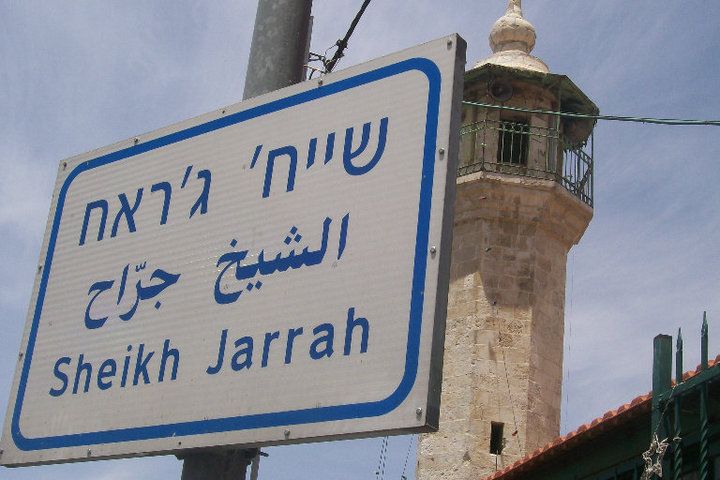
Only The Moon As Witness
Returning to the Twilight Zone of Sheikh Jarrah, East Jerusalem
The ongoing destruction of the Palestinian nation by the government of Israel, armed, financed, and enabled by the United States and European Union, has culminated in another military assault which has thus far left hundreds dead, almost all Palestinian civilians–dozens of them children. This latest massacre, launched by Israeli Prime Minister Benjamin Netanyahu to shore up his tenuous political position, reached its bloodiest depths in the besieged Gaza Strip, where Israeli forces have engaged in the systematic destruction of anything resembling civil society.
Bombing hospital roads, mental health clinics, schools, media outlets, and even bookstores, while apparently targeting doctors and journalists for assassination, this campaign of terror is part and parcel of a military doctrine which seeks to inflict as much pain as possible upon all Palestinian civilian infrastructure. The goal is to gain "quiet," in the belief that Palestinian resistance can only be "managed" by waging a horrifying, one-sided war every few years: Cast Lead in 2009, Pillar of Defense in 2012, Protective Edge in 2014, the mass shootings of "March of Return" protestors in 2018...and now, a new nightmare.
But the shift of Israeli military aggression toward Gaza belies the origins of the latest combat waged against a defenseless people: a small, quiet neighborhood in occupied East Jerusalem, where olive trees still grow on the hillsides, just a stone's throw from the Al Aqsa Mosque. It is a place called Sheikh Jarrah, where Israeli settlers have engaged in a decades-long battle to make refugees out of the neighborhood's Palestinian inhabitants, families who have lived in the same homes there since 1956.
The battle for Sheikh Jarrah exploded into a battle for the dignity of all Palestinians in recent weeks, as settler, police, and military violence spilled onto the Temple Mount itself. If it seems like an unlikely flashpoint from which the third-holiest site in Islam could be threatened by far-right radicals intent on razing it, then you don't know the war being waged in Sheikh Jarrah.
Oddly enough, I do, at least a bit. As a graduate student earning my MA in Middle East Studies in 2009 and 2010, I ended up spending a great deal of time in Sheikh Jarrah, where a protest movement augmented the 24/7 efforts of the neighborhoods Palestinian residents to reclaim their homes. Living on the sidewalks in front of the homes from which they were evicted, or even, surreally, forced to share part of their homes with extremist settlers, the families of Sheikh Jarrah were kind enough to give me a great deal of their time to explain what had happened.
What follows is the product of that field work, written a lifetime ago for me, but about a place where things have sadly changed little. Being an academic submission, the language and tone of this article is a bit more formal a style than that to which I'd normally adhere; some of my assumptions and conclusions also feel woefully naive to me now. Indeed, only a couple of years later, as a confirmed adherent of the Boycott, Divest, and Sanction movement, I would never have agreed to go to Israel as a graduate student. Thankfully, the experience educated me–in graphic detail–as to precisely why such an academic boycott is so critical. As such, I have edited it as lightly as possible to preserve the piece as a product of 2010, as well as published a separate newsletter entry providing an introduction to Sheikh Jarrah, with some fast facts about the neighborhood.
I hope in some small way, this may serve to educate a bit more about the Palestinian experience in Sheikh Jarrah, and to impart a bit of the humanity so evidently in abundance among the people of East Jerusalem.
The Twilight Zone: Signification, Settlement and “Hebronization” in Sheikh Jarrah, East Jerusalem
By Dan O'Sullivan, June 2010
“They don’t know the connection between us and this place”
“Silwan,” said Maher Hannoun, drawing deeply from another cigarette. “If I believe King David was walking there, good, but I don’t need to evacuate one thousand and five hundred people because King David was walking there.” Sitting under the fig tree across from his home, Mr. Hannoun flashed with black humor in describing the situation: “Maybe King David walked through all of Palestine, so they have to transfer all Palestinians from here just because he walked here or there, I can’t imagine how they’re planning to do that.”
At the same time, two years ago, in the summer of 2009, the same Maher Hannoun, a mild-mannered fifty-five year-old sales manager, had been in jail, serving a three-month sentence. His crime: having been found in contempt of court for refusing to pay rent on his home to a settler organization. By the time of the mild June day that the author sat with Mr. Hannoun, on a quiet street-corner in East Jerusalem, the seventeen members of his family had been homeless for ten months, evicted by a police raid on their home in August 2009. To Maher Hannoun, the next step was apparent: “And here, they’re planning to transfer the five hundred people in twenty-eight houses, they’re planning to build here settlements. How come they’re planning to build here settlements, when there is five hundred people living here?”
For Maher Hannoun, “here” is Sheikh Jarrah, erstwhile garden of muftis and playground of notables, cosmopolitan enclave of ritzy hotels and foreign consulates, and former stomping ground of the Palestinian intellectual upper-crust. But the view from Sheikh Jarrah today is not that of some high-class Palestinian Left Bank, but of a conflict zone, closer to Bili’in than the German Colony. Sheikh Jarrah is a small Jerusalem neighborhood northeast of the Old City that continues to draw international attention for its fractious home evictions and Israeli settlement. Four Palestinian families have been evicted from their homes in the past years, some multiple times, while another thirty-seven families remain ensnared by court battles over the proprietary rights of their homes.
Since the early nineteen-seventies, settler groups, such as the Sephardic Community Committee, the Knesset Israel Committee, Nahalat Shimon International, the Israel Land Fund, and the Gush Emunim-affiliated Amana, have sought to claim ownership of Palestinian Arab houses in the area on the basis of pre-1948 claims. Religious Jews are attached to the neighborhood due to the presence there of a tomb they believe belongs to Simeon the Just, a Second Temple-era judge. Palestinians claim the evictions in Sheikh Jarrah are part of a plan to “Judaize” East Jerusalem by kicking out Palestinians and replacing them with Jewish settlers – a goal settler leaders readily admit they aspire to fulfill.
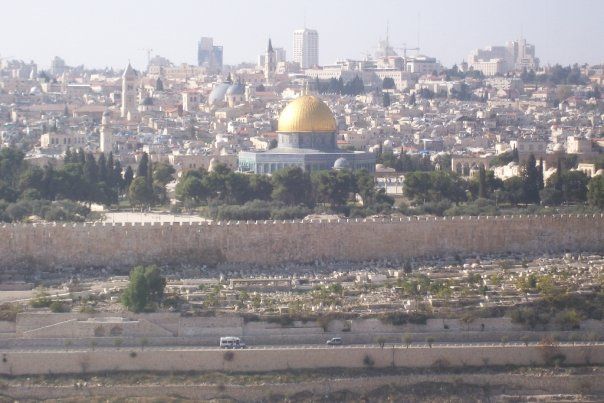
The political and legal implications are complex. The international scrutiny on Sheikh Jarrah is tight; much of the first year of President Obama’s first term was spent struggling to halt settlement expansion in East Jerusalem. In evaluating how centers of power exert influence across the space and time of “Green Line” Israel and the Occupied Territories, there already exists a robust body of geographical scholarship on virtually every aspect of Israeli-Palestinian life.
Why is this neighborhood important? Why is the eviction of fifty-seven people in one small enclave a matter of global import, amongst a nation of hundreds or thousands of refugees? How parlous is the prospect of a few hundred housing units in Sheikh Jarrah – or, as the settlers call it, the neighborhood of Shimon haTzadik – when there are hundreds of thousands of settlers inhabiting the West Bank? Why, of all places, would one choose Sheikh Jarrah as the locale in which to illustrate the Israeli system of power at work? The occupation of Hebron, for instance – where the formerly bustling Shuhada Street market stands as a militarized ghost town – seems like a far blunter, clear-cut example of colonial control.
The attribute that distinguishes Sheikh Jarrah as now more remarkable and more requisite of study than larger settlement projects is lies in the sui generis character of Jerusalem in the Israeli-Palestinian, the completely unique significations attributed to it by Palestinians and Israelis alike. And it is the city’s starkly distinct status that imbues a fundamental, multi-layered ambiguity upon the Sheikh Jarrah community’s location in the geography of Israel and Palestine.
The predominant metaphor coursing through this is of Sheikh Jarrah as a “twilight zone,” caught and abortively subsumed between the sundry binary opposites birthed from the conflict. Sheikh Jarrah is neither the West Bank nor Israel, its denizens are neither Palestinian nor Israeli citizens, and though the inhabitants live in homes, they remain refugees who do not fully own the space. Today, in 2010, Sheikh Jarrah is fully contested, the site of a battle over who will define the neighborhood’s identity. To quote Nabil al-Kurd, one of the affected homeowners, “They are coming here my house and Hannouns and al Rawis more than a thousand people, all kinds of policemen, also on horses – it is like a battle here.” This battlefield, this “twilight zone” – a condition that exists in Sheikh Jarrah not solely because of the East Jerusalem settlement project – speaks uniquely to the deepest contradictions of what it means to inhabit a “Jewish democracy,” one in which authorities exercise ethnocratic control over a minority population.
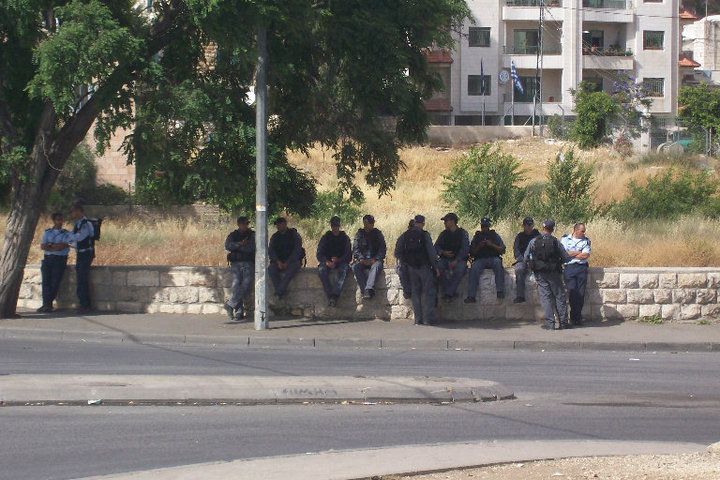
Let us analyze three zones of Sheikh Jarrah through this “twilight zone” mapping. First, the paper will focus on the displacement of the inhabitants of Sheikh Jarrah and their societal marginalization, with a special emphasis on their historical memory as refugees of 1948. In the second section, we will examine the spiritual-mythic geography of Sheikh Jarrah, with the areas religio-nationalist sanctification of Sheikh Jarrah – embodied most profoundly by the signifying, colonizing actions of both the settler movement and the Israeli state. Finally, we will consider the physical territory of Sheikh Jarrah as a strategically important, politically contested area, in which multiple centers of political and legal power battle to control and define the neighborhood on tendentious terms of ownership. The re-signification and settlement of Sheikh Jarrah as an exclusively Jewish space would be impossible without official sanction and support from the state’s control apparatus. It is to this system of control and the implications of successfully Judaizing Sheikh Jarrah that we shall turn to in this paper’s conclusion.
Within the grassy boundaries of Sheikh Jarrah lies, exposed, the deepest structural inequities of the Israeli governing consensus, a program of discriminatory ethnic stratification that excludes Palestinians from inhabiting a fruitful place in Israeli society. Sheikh Jarrah is the tangible outcome of the governing Zionist compact that increasingly defines citizenship based a consensus of anti-Arab marginalization.
While there already exists a large field of scholarship applying the ethnocratic paradigm to Israeli policies, this paper possesses two attributes the author hopes will distinguish it among others and perhaps go some small way in filling in prior research gaps. First, in researching the existing scholarship on the issue, the author noticed a tendency of the work to deal in somewhat abstract terms in mapping the political and social geography of Israel. The unit of analysis rarely reached the human level. As a result, the primary sources underpinning much of this paper are extensive interviews I conducted with people intimately connected to Sheikh Jarrah, such as civil society workers, United Nations representatives, and a settler real estate agent. In particular, however, I focused on interviews with the residents of Sheikh Jarrah, particularly those who have already been displaced through court order. In so making the “thick description” of personal interviews the cornerstone of this paper, the author hopes to give greater agency to the individuals most involved in the neighborhood’s future, thereby illustrating the neighborhood’s segregation, signification, and settlement – through the key actors’ own words.
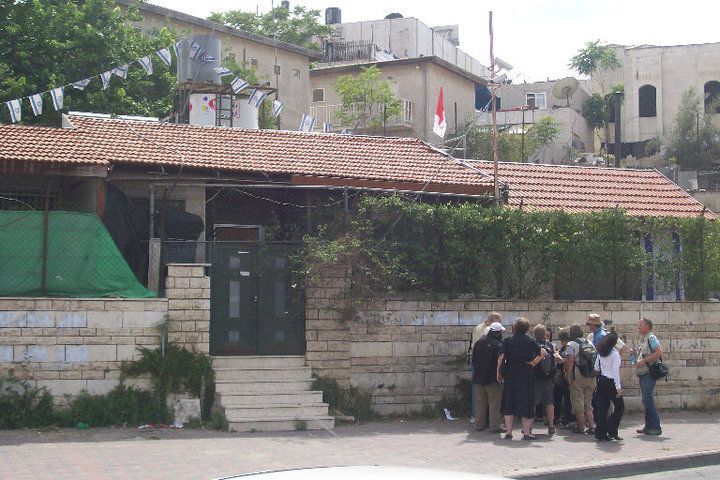
The second way that this study of Sheikh Jarrah hopes to distinguish itself is in its focus on a particularly topical subject, a conflict whose resolution has consequences not merely for the Israeli-Palestinian conflict, but for global public opinion, the U.S.-Israeli bilateral relationship, and, indeed, the very viability of the two-state solution. The long-term consequences of the settlement of Sheikh Jarrah, a crucial link in the “Holy Basin” ring of communities surrounding the Old City, could not be greater. Indeed, the issue of settlements constituted the basis for the most serious U.S.-Israeli diplomatic crisis since the early nineteen-nineties.
The 2009 Obama-Netanyahu dispute over a settlement freeze, and the March 2010 row over East Jerusalem settlement expansion during Vice President Joe Biden’s trip to Israel, have focused attention on areas like Sheikh Jarrah in a way unseen since the Oslo process. With the body of the paper devoted to framing the personal, official, and ideological dimensions of ethnocracy in Sheikh Jarrah, the conclusion will offer the final, spatial implications of this project. Should, as Ilan Fathi, the director of educational programs for Breaking the Silence, frames it, the “Hebronization of Sheikh Jarrah” succeed, the implications of this power play on the neighborhood will be felt much farther afield than French Hill.
Ethnocracy in Action
Before delving into a full-fledged exploration of the spatial dimensions of Sheikh Jarrah as the physical site of a more cosmic struggle, let us first establish the theoretical framework underpinning the work, as well as briefly sketch the physical layout of Sheikh Jarrah. As mentioned briefly above, this paper employs the concept of “ethnocracy” as a theoretical framework with which to contextualize and understand the contestation of Sheikh Jarrah. At its core, the ethnocratic model “indicates a specific principle of power-distribution in a society,” one in which “the raison d'être…is to secure that the most important instruments of state power are controlled by a specific ethnic collectivity.” ("Defining Ethnocracy." Institutt for Statsvitenskap Ved Universitetet I Oslo. Faculty of Social Sciences, 2006. Web. 28 June 2010.)
As constructed and applied by political geographer and social scientist Oren Yiftachel, this power differential “promote the expansion of the dominant group in contested territory and its domination of power structures while maintaining a democratic façade.” In Israel and the Palestinian Occupied Territories – a distinction Israel does not formally recognize with a legal border along the June 5th, 1967 line – “ethnocracy manifests itself…with the long-term Zionist strategy of Judaizing the homeland – constructed during the last century as the Land of Israel, between the Jordan River and the Mediterranean Sea.” (Yiftachel, Oren. Ethnocracy: Land and Identity Politics in Israel/Palestine. Philadelphia: University of Pennsylvania, 2006. Print. 3.) When we are discussing Sheikh Jarrah in this light, it is on an ultimately psychic level that ethnocratic forces seek to impose their power within the spatial confines of the neighborhood; success will come when the neighborhood can be credibly called that of “Shimon haTzadik,” with no Arab residents there to puncture the illusion.
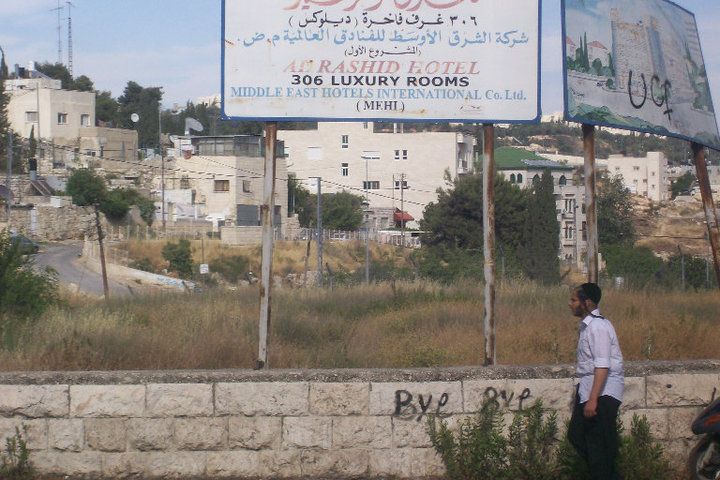
This ethnicization project is state-sanctioned, put into action by a “control system” whose “legal, institutional, and physical instruments of power” are employed “to secure ethnic dominance.” ("Defining Ethnocracy.") Throughout the Knesset, and apart from Hadash and Arab Israeli parties, a Zionist consensus exists on the validity of this dominance, ranging from the far right of the political spectrum towards what remains of the left. Meretz’s Yossi Beilin, one of Israel’s most high-profile doves, described in 2001 “what will happen when the number of Arabs who are citizens of Israel and the number of Arabs who are under Israeli rule exceeds the number of Jews,” terming it the day “all hell will break loose here.” As Beilin termed it, “it will be the end of the Zionist idea.” This “Zionist idea” manifests itself throughout “the Land of Israel.” For “five decades” Israel has struggled to Judaize the Galilee, the state’s “Arab heartland, home to nearly 600,000 Palestinian citizens.” (Cook, Jonathan. Blood and Religion: the Unmasking of the Jewish and Democratic State. London: Pluto, 2006. Print. 134).
State agencies sustain the coercive urbanization and neglectful marginalization of Negev Bedouin communities. The nationalist aspiration to keep the Golan Heights from reversion to Syria remains strong, with the proponents of a comprehensive Levantine peace deal recently identified by Likud MK Carmel Shama as “enemies from within.”
Most dramatic, of course, is the decades-long settlement movement in the West Bank and Gaza Strip, a systemic “breach of a series of international conventions and norms that prohibit the transfer of populations into occupied areas.” (Yiftachel, Oren. Ethnocracy: Land and Identity Politics in Israel/Palestine. Philadelphia: University of Pennsylvania, 2006. Print. 5.) Per journalist Akiva Eldar's history of the settlement movement, Lords of the Land, this effort has resulted in the presence of around three hundred thousand Israeli settlers in the West Bank–an achievement which “would not have been possible without massive aid from various state institutions, without legal sanction, and without the expedient and affective ties woven between the settlers and the military.”
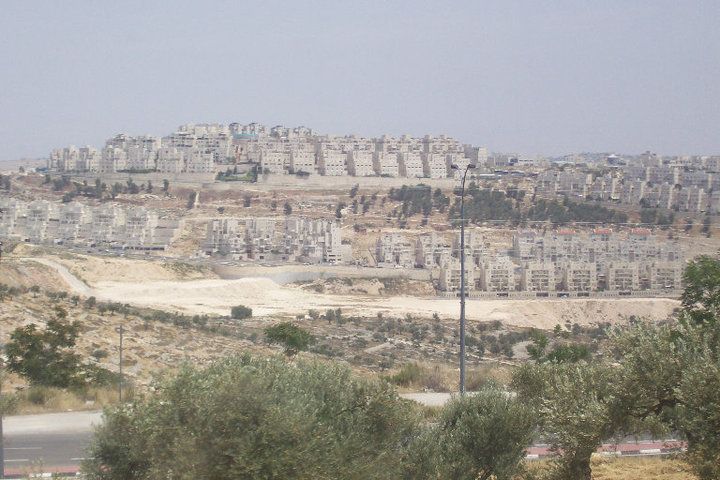
This “official encouragement [at] the government’s initiative” is part and parcel of the main mission of ethnocratic and settler regimes: “ethnicizing contested territories and loci of power.” (Yiftachel, Ethnocracy, 275.) On the scale of contestation and sources of cultural significance, there is no space more bitterly and fervently dispute than al-Quds, Yerushalaim, or Jerusalem.
On September 29. 1977, then-Minister of Agriculture Ariel Sharon presented a three-pronged settlement plan to the government that would seek to dramatically expand Israeli population blocs deep inside the Occupied Territories. While prongs one and two concerned the establishment of an Israeli presence deep within the West Bank, as recounted in Lords of the Land, the third prong “dealt with an envelope of Jewish settlements surrounding the Arab neighborhoods of Jerusalem, ‘to strengthen the capital.’”
The results of this ethnocratic mission to Judaize Jerusalem, marginalize Arab claims to the space, and thereby dominate the urban area are apparent today. Home today to two hundred and twenty thousand settlers living beyond the Green Line, Jerusalem, at the center of three faiths, is, in the words of peace activist Gershon Baskin, “the most segregated city on earth.”
The Physical Geography of Sheikh Jarrah: “One of the most serene spots in Jerusalem,” NPR
Today, following the Hebron model, in which settlers established their homes in the urban heart of the occupied Palestinian populace, Jerusalem’s settler activists are increasingly making their home not in the “metropolitan” ring around East Jerusalem, but directly in the heart of Arab neighborhoods, such as Silwan, Ras al-Amud, and Sheikh Jarrah. In order to fully appreciate the more abstract terrain of Sheikh Jarrah, it is necessary to first establish the territory’s physical footing, pictured in the appendix from Ir Amim.
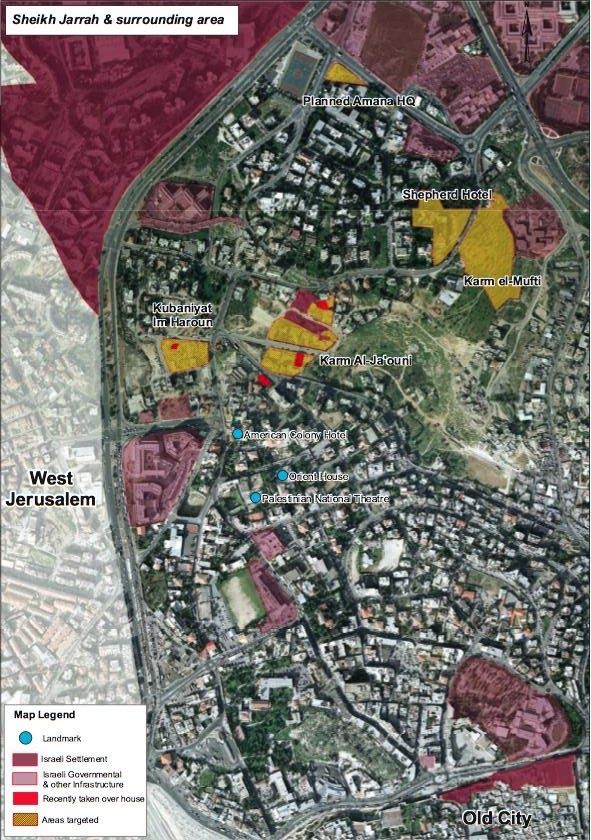
Given the publicity, violent confrontations, and high-profile international concern generated by the area’s settlement activities, perhaps what is most surprising upon first glimpse of Sheikh Jarrah is how quiet and small the neighborhood is. Slightly northeast of Damascus Gate and off the heart of the Ṣalāḥ ad-Dīn commercial district, it is today home to only around two thousand seven hundred Palestinians, along with a few dozen Jewish settlers. The two populated areas targeted for settlement activity, Karm al-Ja’ouni and Kubaniyat Im Haroun, comprise, respectively, only eighteen and eight dunam each (about four and a half and two acres). These residential areas sit divided by Nablus Road, a boulevard that services many buses running towards the West Bank, and which continues winding north up the hilltop that constitutes most of Sheikh Jarrah. The two small neighborhoods, Karm al-Jaouni to the east of Nablus Road, Kubaniyat Im Haroun to its west, sit in a grassy valley which, like the orchard that still exists on the eastern slope of the hill, served as an olive grove. Olive and fig trees still line the streets here.
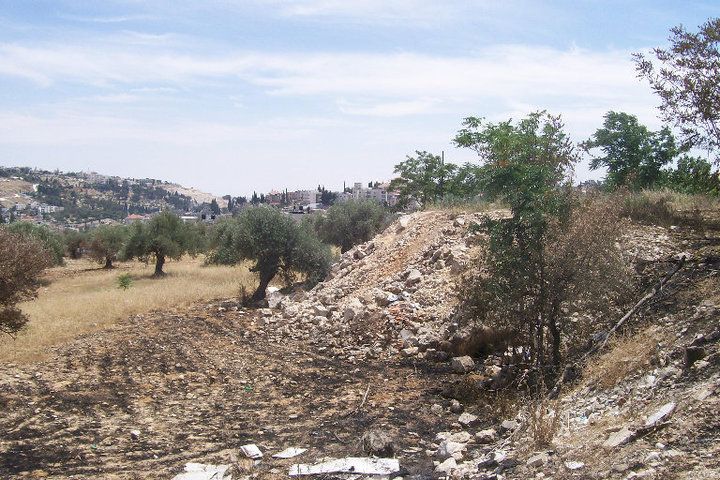
Karm al-Ja’ouni is the site of the al-Rawi and Hannoun homes, from which both families (a total of fifty-six people) have been evicted by court order. The settler organizations most involved in this neighborhood, Sephardic Community Committees and Nahalat Shimon International, have filed plans with municipal authorities to eventually build two hundred housing units in this area. It is directly adjacent to these homes that the tomb of Shimon haTzadik is situated, an attraction that has long drawn religious Jewish devotees. While this is area has been the most attention-grabbing site in Sheikh Jarrah, owing the human element and weekly protests there, it is not the only corner of the neighborhood in which settlement activity is occurring.
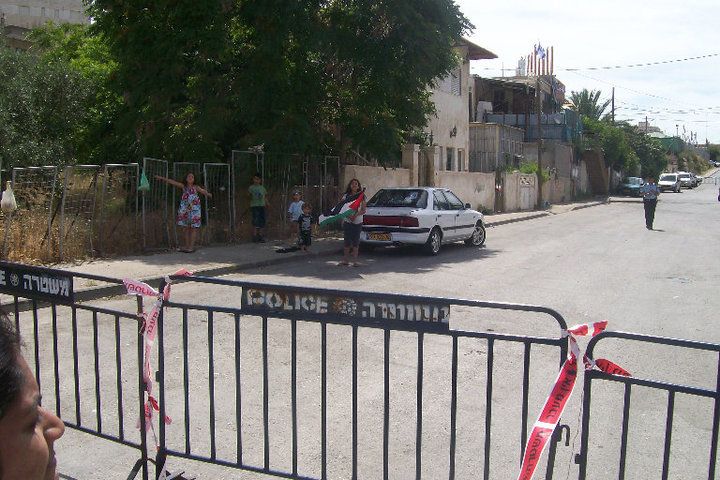
On the eastern face of Sheikh Jarrah, opposite Mount Scopus, lies a forty dunam olive grove, known as Karm al-Mufti. So named for the late Haj Amin al-Husseini, the land is another place of legal contention between settler organizations and local Palestinians. Overlooking the terraced fields from atop Sheikh Jarrah is the Shepherd Hotel, abandoned since the 1967 War and currently owned by a settler consortium. This consortium’s main backer is American multi-millionaire couple Irving and Cherna Moskowitz, whose American gambling operations and private-sector healthcare companies are used to fund a broad array of settler interests. The hilltop on which Shepherd’s Hotel rests comprises the built-up majority of the neighborhood; there is a strong international presence, including the historically strategic British Consulate, the headquarters of the United Nations Office for Coordination of Humanitarian Affairs, and a European Union compound. (Evictions and Settlement Plans in Sheikh Jarrah: The Case of Shimon HaTzadik. Issue brief. Ir Amim, 25 June 2009. Web. 21 June 2010.)
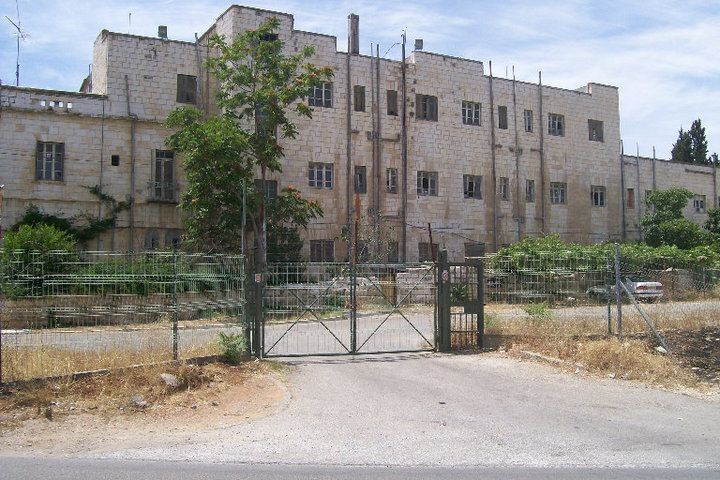
Further north into Sheikh Jarrah in the Begin Government Quarter, on the site of the former British Police Academy, sits the Israeli National Police Headquarters; significantly, in conjunction with the Justice Ministry headquarters on Ṣalāḥ ad-Dīn Street, the entire neighborhood of Sheikh Jarrah is ‘bookend-ed’ by a major security service presence. A vacant lot across from the Police HQ constitutes the site of the future headquarters of Amana, “the major organ of the West Bank settler movement.” To the west of this quarter is Ammunition Hill, site of some of the fiercest fighting of the 1967 War; to the north, the Israeli settlement of French Hill; and to the east, Mount Scopus.
Twilight Zone - The Human Terrain of Sheikh Jarrah: Expansion, Ethnicization, and Control
Communally, the five hundred potential and current evictees of Sheikh Jarrah are refugees of 1948, yet were settled in homes decades ago; they are Hebrew speakers whose voices cannot be heard in Israel; they are Jerusalem residents pinned between the Green Line and the separation barrier. They are Arabs who are neither Israeli nor Palestinian citizens, some of whom are now two-time refugees from two fondly remembered homes.
These families’ current misfortunes are the product of conflict with the vision of people like Mayor Nir Barkat: “I have to balance Jerusalem and keep it Jewish, as the Jewish capital of the world.” This section will explore the twilight zone of uncertainty and instability the residents of Sheikh Jarrah face as the minority in an ethnocratic society, particularly as state-backed settler forces attempt to further “de-Arabicize” the neighborhood. As indicated, from here forward we will rely largely on interviews with Sheikh Jarrah residents to tell the story of how abstract conceptions of ownership are translated into spatial reality, with a particular emphasis on three themes: displacement, marginalization, and settlement.
The alienation of Sheikh Jarrah’s residents has been occurring for decades, as refugees of 1948 and second-class citizens. The framework for this, the bulk of the paper, will rely on the model of “expansion, ethnicization, and control of a dominant ethnic nation (often termed the charter or titular group) over contested territory and polity.”
EXPANSION: Displacement and Marginalization: “As I told you we are refugees. And now we are refugees again.”
Perhaps the greatest irony of the current tensions in Sheikh Jarrah is the preexisting refugee status of the three hundred residents in Karm al-Ja’ouni; they are among the descendents of the roughly eight hundred thousand refugees of the 1948 War. Among these refugees were some twenty-eight families of three hundred people, who, living in East Jerusalem in 1952, would find themselves, faced with a tempting offer involving Sheikh Jarrah.
One of these families is the al-Rawis, whose eighty-seven year-old patriarch, Abd al-Fatah al-Rawi, was among those who fled during the war. His son, Nasser, is today the main spokesman for the evicted families of Sheikh Jarrah. A jovial, stout man, Nasser al-Rawi, a forty-seven year-old printing press operator and translator, can be found today under the fig tree across from the home he was evicted from in August 2009. It was there he told the author of his family’s origins:
“My family came in 1948 from a small village beside Tel Aviv, Sarafand. They made the first station in Latrun, and the second station, Jerusalem. And when [the villagers] decided to continue to Jordan, they asked my parents, let’s go, Abd al-Fatah, my father, let’s go to continue to Jordan. And he said no, I like this place, I don’t want to move from here. I’ll stay here.”
The village of Sarafand, a few kilometers northwest of Ramla, was captured early in the 1948 War as part of the Haganah’s ‘Plan Dalet.” In April, Operation Nachson, designed to secure the main Tel Aviv-Jerusalem transport corridor, began; it was during this offensive’s early stages that Irgun fighters killed over one hundred Palestinians in the village of Deir Yassin. On April 20th, the Givati Brigade succeeded in capturing the outskirts of Sarafand, and a month later, during the larger outbreak of hostilities, the Brigade captured the whole of the area in Operation Barak.
It was at that point, says al-Rawi, that the residents of Sarafand, fearful of Deir Yassin, fled: “It was the organization of the Haganah, them scaring the people, in the villages, you know, they don’t know what’s happening, it was enough to shoot some bullets…to scare.” Today, Sarafand is the Jewish town of Tzrifin, site of IDF Camp Yigael Yadin, as well as the country’s largest military prison; today, no more than “six houses remain; most of them are deserted, but Israelis occupy one or two.”
Maher Hannoun and his family of thirteen were also evicted in August 2009, in the same earl-morning police raid that ejected the al-Rawi family. The Hannouns were likewise displaced during the 1948 War:
“My family was living in West Jerusalem during 1948. After the war, you know, they lived in East Jerusalem and the Old City, until the Jordanian Government and UNRWA gave us those houses. But my family is originally from Haifa, and they moved to the capital to look for a chance to work.”
As with the Hannouns, Mohammed and Fawzia al-Kurd fled their West Jerusalem homes in Qatamon and Mamilla during the 1948 conflict. The al-Kurd family was also evicted from their Sheikh Jarrah home, in 2008. Mohammed Sabbagh, who has yet to be evicted from his home but who remains a legal target of settler organizations, came from further afield: “I have been in my house since 1956…My family fled from Jaffa, in Palestine, in 1948. Many of the families fled to Kuwait, Saudi Arabia, Jordan, but my family came to Jerusalem.”
What these families of disparate origins shared in 1952 was their status as refugees living in East Jerusalem. It was in that year that their status began to change. In an effort to mitigate the overcrowding, poverty and homelessness faced by many of the refugees, the United Nations Relief and Works Agency for Palestine Refugees in the Near East, in cooperation with the Jordanian Government, offered these families the construction of homes in exchange for the renunciation of legal refugee status.
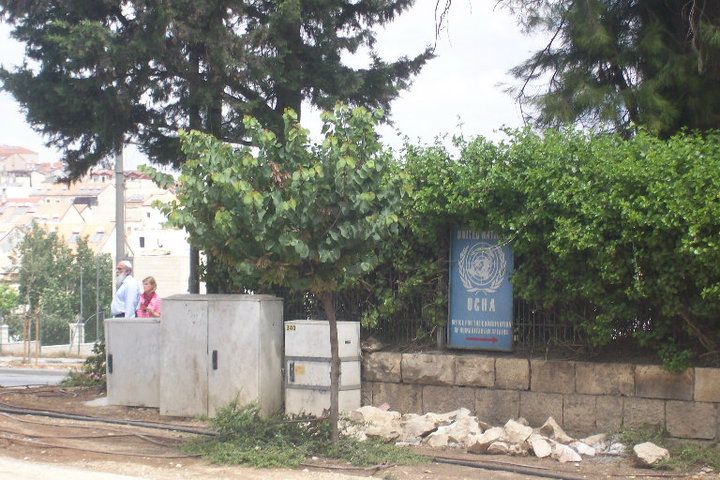
According to the arrangement, the families were promised by the Jordanians that after a period of three years of paying a nominal rent, they would receive legal title to their properties, and become homeowners once again. The site in which the twenty-eight homes was to be constructed: Karm al-Ja’ouni, still a grassy olive grove and a property all the Sheikh Jarrah residents insist was either vacant or owned by the local Hijazi family. As each of the neighbors independently told it, the specific sites of their homes were vacant at that time, as Nasser al-Rawi recalled:
“In 1948, it was empty this area. And I’m talking about 18 dunams (1/4 acre). It was only a garden of olive trees. In 1952, the Jordanian government provided the land, the 18 dunams, to the United Nations to build a new refugee camp. And the UN built 28 apartments. They started 1952, they finished 1956. In 1956, they asked my parents to make an exchange with the refugee camp with this apartment. My parents accepted this agreement, in 1956 they occupied the house. I’m born in the house, before 47 years.”
Given the sustained importance assigned by Palestinian negotiators to the “right of return” issue, it is striking that in 1952 – only four years following their initial displacement – the families would sign a contract explicitly giving up their legal refugee status in favor of a home. But that, as Maher Hannoun recalled, is what his father did:
“The Jordanian Government and the UNRWA gave us these houses because we are refugees. And we have an agreement between us and the Jordanian Government when they gave us these houses, and it’s written in this agreement that after three years, they will transfer the ownership to us. But this didn’t happen, and we lived here normally until the 1967 war, after the Israel occupation of the West Bank and East Jerusalem.”
Mohammed Sabbagh’s father did the same; today, Mr. Sabbagh is adamant that the property was not stolen from any prior owners:
“They can’t use these to claim this land because [the contested area, Karm al-Jaouni] was empty, only trees here. And the [building] project was in 1956. They’re hoping that they own this land. Let them say they own it. But how can you evict families that have lived here from 1956 til now…Not just my family, there are other families – twenty-eight families. Five hundred and fifty persons. All of them are refugees; we didn’t steal that land and we didn’t steal those houses. The Jordanian Government and the United Nations Relief Organization offered us the land for these houses. [The Jordanian Government] promised to give us the property, but they postponed it, after three years, after three years, until ’67, war between Israel and Jordan, Jordan is out now."
As to why the families never received property deeds, Nasser al-Rawi offered a plausible explanation:
“The Jordanian government know there is no owner of this land, and they don’t want a problem between the Hijazi family, a Palestinian family, and the Jordanian government [Suleiman Hijazi has since unsuccessfully pursued legal recognition for this former ownership]. So they claim they can register these units for the people after three years, in 1959. But they don’t do it, because they don’t want a new claim in the courts in Jordan that the Jordanian government stole the land. And in 1972, we can’t go to ask the Jordanian government because they don’t control the land.”
In conducting the field research that produced these interviews, what was perhaps most surprising in discussing the current settler movement in Sheikh Jarrah was the lingering memory of their families’ prior, even more rupturing displacement in 1948. As Moshe Dayan admitted, listing a series of destroyed Arab villages in a 1969 speech, “there is not one single place built in this country that did not have a former Arab Population." Dayan described in frank terms the indigenous displacement and ethnicization undertaken by Israeli forces in the early years of the state:
"Jewish villages were built in the place of Arab villages. You do not even know the names of these Arab villages, and I do not blame you because geography books no longer exist, not only do the books not exist, the Arab villages are not there either Nahlal arose in the place of Mahlul; Kibbbutz Gvat in the place of Jibta; Kibbutz Sarid in the place of Huneifis; and Kefar Yehushu'a in the place of Tal al- Shuman.”
This initial displacement, such a traumatic experience to the Sheikh Jarrah families a generation before, is being repeated today, through means discussed in the next section. For Israel, the essential tension of 1948, between demography and “Jewish democracy” remain today, just as for the families, it is difficult not to draw a direct linkage to the experiences of their parents. The ethnocratic “dislocations, struggles, and contradictions” of “Judaizing Israel/Palestine” have changed little in sixty-two years. (Yiftachel, Ethnocracy, 6-7) Maher Hannoun was explicit on this point:
“How come they’re planning to build here settlements, when there is five hundred people living here? Which means that they don’t care about the people, they just care about the land and bringing more settlers here. It’s not fair what’s happening here, and as I told you we are refugees. And now we are refugees again. They would transfer us again and again and again, so they must stop the transfer. They must give us justice, to live, in quiet and normal.”
The Judaizing ethnicization of Arab space in Israel/Palestine is, it would seem, the alpha and omega of policy towards the state’s Palestinian population. The treatment of first the residents’ hometowns, then Sheikh Jarrah, as “internal frontiers into which Jewish presence should expand” (Yiftachel, Ethnocracy, 194) have left the Palestinians living in a twilight zone. When one’s very home is a point of contestation from well-funded, powerful settler interests, and when one’s minority status keeps them marginalized from evincing any real influence upon the institutions of control, it is easy to see why Maher Hannoun predicts transfer, “again and again.” Having established the historical precedence for this type colonial displacement, let us now turn to the practical realities of how and why this marginalization is accomplished – beginning with the signification and settlement of religio-nationalist Jews in Sheikh Jarrah.
ETHNICIZATION: Signification and Settlement: The Religio-Nationalist “Drive to Control” Signified, Contested Space
In conducting interviews with the Palestinian inhabitants of Sheikh Jarrah, the author frequently posed the question: do you have any contact with the settlers now living in your homes? Their answers were blunt and all reflected Maher Hannoun’s reaction: “No way. How can I talk to them?” When the author asked Nasser al-Rawi, he could barely finish answering, “there are no relations” - before one of Nabil al-Kurd’s daughters, serving the party tea, began yelling angrily in Arabic. When asked what she was saying, Nasser responded:
“She said, the relations between the Arabs and the settlers, it’s only clashes. They came to beat the women, and kids. And I told the settlers, keep the women and kids off the table…you know, they beat the women and kids the first time. I’ve shown the settlers that I can fight, so all of the settlers are scared from me. And they don’t want more clashes with me. When I come, they go in the house…and you know, I told them, please, our women, our children, out the game - no, they rejected this agreement. And I’ve shown him, two times, how I can beat. Don’t touch the women. They know. They rejected my agreement. They want to beat the women and kids.”
Unfortunately for the author, this record of settler hostility (by now a matter of public record) extended towards the author, who experienced difficulty in contacting representatives. Speaking with a more successful interviewer on the morning of the evictions, one of the current inhabitants of the Hannoun home, a Jewish-American settler, had this to say: “We don’t care what the world thinks of us, what are land is or what our land is not…we are a chosen nation and the world knows that. And God promised us Jerusalem.”
It is precisely this kind of rhetoric that transforms “ethnocracy” from the abstract into the concrete, colonial application of power; the cosmic conviction with which the aforementioned settler spoke is typical of the ethnocratic regime’s “ability to construct and maintain the myth of the ethnonational homeland as a fundamental mobilizing force.” (Yiftachel, Ethnocracy, 9.) In Sheikh Jarrah, settlement has first been preceded by the application of this myth to the neighborhood, an enclave settlers and the new municipal light rail system refer to by a different name: Shimon haTzadik. Much like Moshe Dayan’s recollection of the Judaizing of place names, Sheikh Jarrah has, since the beginning of the Israeli occupation and the rise of the settler movement, been a targeted site of ethnicization. Settler claims on the neighborhood tend to blend two arguments: first, that, legally speaking, the land was Jewish-owned at some point in the past, and second, that in a more spiritual realm, the land is their birthright.
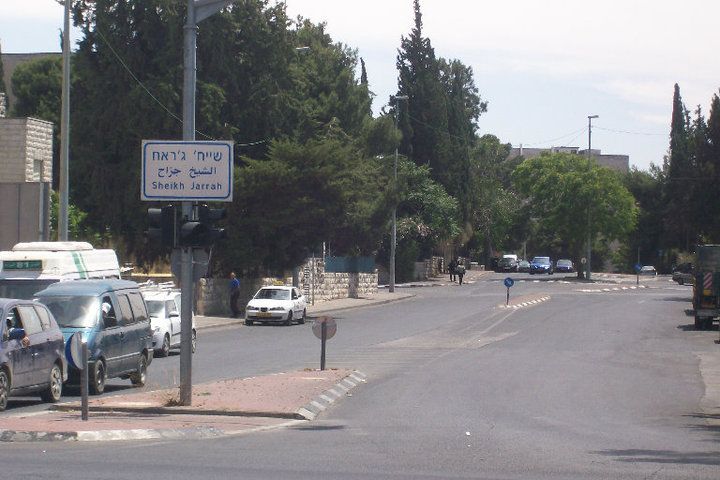
On behalf of the Sheikh Jarrah residents, Nasser al-Rawi has been able to arrange only one meeting with settler representatives since his family’s eviction – and as it turned out, it was with a high-profile figure in the religio-nationalist community. Al-Rawi recounted his meeting with right-wing activist Yehonotan Yosef, grandson of former former Sephardi Chief Rabbi of Israel Ovadia Yosef:
“I’m trying to talk with the settlers for five months. And [Yosef], the speaker of the settlers, said, you want a dialogue with me? I said yes, please. He said, okay, what do you want to ask me...I ask him, what do you feel when I’m out my house, and you keep my house? He told me, Nasser, believe me, it’s not me. I’m not evicting. God told me to take your house. I want to know what kind of people they are, whether they’re human beings. I ask him about the 300 children Israeli forces kill in Gaza. He said, so what. It can be four thousand. If God told me to kill the Iraqi people, I will do it. I cannot refuse. If God told me to kill the American people, I will do it. I cannot refuse the order of my God.”
It is difficult to gauge the accuracy of the recollection, owing the difficulty in contacting Yosef. But al-Rawi’s larger viewpoint is illustrative:
"I translate 30 years, from Hebrew to Arabic, and I don’t know, really, by any language, God told him to kill, to take, to demolish, really I don’t know. But the reason is God. The ideology of the settlers is to kill the Arab people. They’re not Jewish.”
What role has religion played in the Sheikh Jarrah settler project? What is the overarching compulsion for its Jewish residents to, figuratively speaking, live in the lions’ den? Palestinian residents, as well as NGOs like Ir Amim, are insistent there was no Jewish ownership in Karm al-Jaouni prior to 1948; said Nasser al-Rawi:
“This area in 1952 the United Nations built it, but there were apartments up there in the other block for Jews. And we are not ignoring their right, the Arab people who lived there, they paid rent to Jews. So if you have five apartments, it does not mean all of Jerusalem is yours.”
Though Israeli Foreign Ministry spokesmen like Andy David continue to insist, “those homes were not the property of the people claiming to be living there…they were the property of Jewish families,” the houses did not exist prior to 1956. No court order has ever found the land to have been owned by any Jewish property-owners, as all rulings have relied rather narrowly on the precedence of a 1982 arrangement that granted Sheikh Jarrah residents protected tenant status; the court has continued to eschew a major decision on ownership. If the substance of the legal dispute remains largely unaddressed, what then of the second strand of argumentation? The settlers in the neighborhood have not claimed to be descendants of any pre-war Sheikh Jarrah residents; what then is drawing them to the neighborhood?
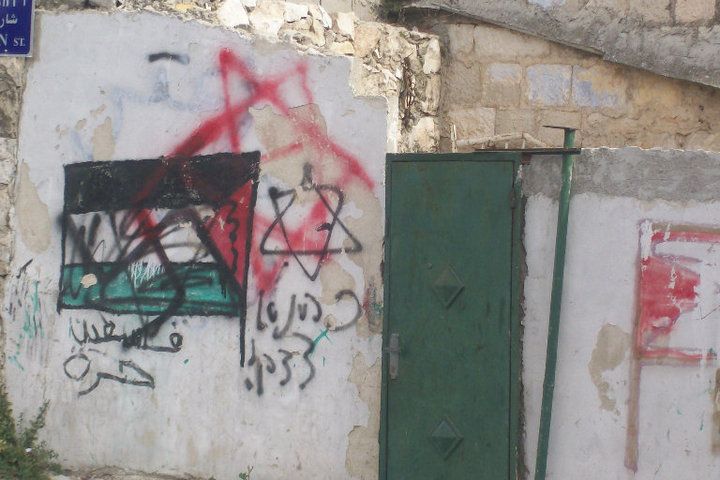
The answer is complex and multi-layered, but continues to rely on the logic of an ethnocratic regime. In the “twilight zone” of a borderless land, in which a mythical Jewish homeland has greater coherence than the complex, heterogeneous nature of life in Israel and the Territories, the most mobilized of the Jewish Israeli populace have engaged in a “creeping apartheid.” (Yiftachel, Ethnocracy, 276.) The sanctifying of the territory, both in religious and Zionist terms, and the encouragement and legitimization of this myth by the Israeli government, has birthed a power dynamic in which, to paraphrase Akiva Eldar’s quip, every hilltop is the Second Temple.
This sanctification of territory as inviolably Jewish has caused “the Arab presence [to be] delegitimized and constantly portrayed as a danger, causing deep patterns of planning discrimination.” (Yiftachel, Ethnocracy, 194.) This insidious threat is especially sensitive to the charter party regarding signified, sanctified sites – the same kind of signification espoused by Palestinians like Nasser al-Rawi, who said that “without Al Aqsa and East Jerusalem, there is no peace, any time.”
What then is the significance of Sheikh Jarrah to the highly mobilized foot soldiers of ethnocracy now dwelling in Karm al-Ja’ouni? Most directly, it is the Shimon haTzadik gravesite. While many the many devoted people who come to pay homage to the site believe it to be the final resting place of Simeon the Just, who died in the fourth century BCE, the marble tomb itself dates to the middle to late Roman period. In fact, engraved atop the tomb – in Latin – is the name “Julia Sabina,” casting grave doubt on the claim that the interment is that of Simeon. Nevertheless, the tomb is particularly popular with Mizrachi Orthodox Jews – who also comprise the majority of the settlers in the neighborhood. Ultimately, it does not really matter if the site is authentic or not – it is signified as sacred, it is spatially surrounded by an extraneous population, an aberration to be removed, and, perhaps most importantly, it surrounds the Old City.
British artist William Henry Bartlett observed the religious Jewish population of the city on an 1851 journey to Jerusalem:
“The Jews of Jerusalem have obtained permission to assemble on this spot to lament over the desolation of their people, and to implore the scene of their former glory, chanting in mournful melody, not unmingled with a dawn of hope – 'Lord build! Lord build!/ Build thy house speedily/ In haste! In haste! Even in our days/ Build the house speedily.' (Gilbert, Martin. Jerusalem Illustrated History Atlas. 3rd ed. London: Valentine Mitchell, 1994. 31.)
The greatest house of all has yet to be built, but the religio-nationalist right-wing in Israel remains unwilling to foreclose on that dream by endangering control of the Old City and the Western Wall. In the grand geography of Jerusalem, the ‘Holy Basin,’ as it is known – the belt of Arab neighborhoods around the Old City – stretches from Sheikh Jarrah to Mount of Olives to Silwan, and finally, to Ras al-Amud. As any comprehensive Palestinian-Israeli peace deal would almost certainly involve the creation of Jerusalem as the capital of a future Palestine, a spatial ethnicization of this belt would make contiguity between Palestine and the Temple Mount all but impossible. As elucidated by former Tourism Minister and Moledet leader Rabbi Benny Elon, “our strategic plan for the city is one, a belt of Jewish continuity from east to west.”
The residents of Sheikh Jarrah are all too painfully aware of their neighborhood’s importance as the starting link in this chain, and as part of a larger effort on the part of religious settlers to ethnicize East Jerusalem; as Nasser al-Rawi put it:
“The Arab people in Jerusalem, we are 36%. [The Israeli government] want to [reduce] this number by 2020 to 12%. 2050 – zero Arabs in East Jerusalem. In Jerusalem it’s an important place because they want to demolish these houses and to build a new settlement. They’re not planning on building a settlement in my house. It’s been seven years they’re planning to build a new settlement. And you know, the area, actually they want to circle the Old City with settlements and gardens, tourist gardens, you know. They want to circle the area, and if you’re circling the area, it means you cannot move free in East Jerusalem.”
Maher Hannoun explicitly linked the settlers’ actions to government policy regarding peace – a linkage government spokesmen like Andy David deny, but which is belied by the state legitimization of settler efforts:
“As you know we are asking for East Jerusalem to be our future capital, but every day they are changing everything on the ground, to make our mission impossible later, to make East Jerusalem part of our future state. And as you see, they try to transfer more and more Palestinians from East Jerusalem, at Sheikh Jarrah, at Silwan, at A-Tur, everywhere in East Jerusalem.They want to make a circle around the Old City, starting from Sheikh Jarrah to Shepherd’s Hotel to Mount of Olives until Ras al-Amud and Silwan.”
The legal process is far from the only means through which settler groups have attempted to colonially secure Sheikh Jarrah, as Nabil al-Kurd, a resident whose home is partially occupied by settlers, noted:
“You know Benny Elon? He offered ten million dollars to take me out of this house. For ten years. The Minister of Tourism. In that time, he brought ten million dollars for me to remove myself from this house… They want my house only because they want to put eight houses here…but the land was not found Jewish in the court. The land is Palestinian, not from now, from more than one thousand years ago.”
For both the settlers and the Palestinians, Sheikh Jarrah today remains an ethnic twilight zone, owned wholly by neither as the site of ongoing contestation over who will define it. In terms of advantage, however, there is no comparison. The settler movement would not be successful were there not an ethnocratic state system of control to support it.
THE CONSOLIDATION OF CONTROL: The Future of Colonial ‘Hebronization’ in Sheikh Jarrah
While the religio-nationalist signification imbued upon contested space is a major prerogative for the Israeli settlement movement, of the sort represented in Sheikh Jarrah, they are neither the only social group that feels this way, nor even the most important. On the day of his eviction in August 2009, Nasser al-Rawi says he came to view the settlers as a secondary problem:
“Some information – that when they evict us, after one hour, the settlers, in the house, with their furniture, after one hour. And after one hour, in the same time of the eviction, the manager of the Police came and asked me for the key to my house. And I told him: but there is no door to use the key [laughter (it had been knocked down)]. And they took the key from me, and they go to the settler. [The police captain] kissed the key, and brought it to the settler. It told me, your problem is with the Israeli Police, not with the settlers.”
The efforts of Israeli settlers would be totally and completely for naught were it not for the “network of infrastructures…the electricity grid, the water system, the formidable military forces that move around in the territory” that serve as the “elixir of life” for the entire project. This system of control, personified structurally by the Israeli legal process, political system, and coercive police and military forces – and conceptually by the ethnocratic ethos of the oppressive consolidation of Judaization – makes the wheels go round.
Settler groups were initially unsuccessful in their early attempts to evict Sheikh Jarrah residents, as the Palestinians emerged from court victorious, Nabil al-Kurd recalled:
“From 1971, we’ve had trouble with the Jewish. Because in ’71 they chose four families, and made a case for them, and they didn’t win the cases. Because there is something like a law – if you stay fifteen years in some place, it will be for you. The case, they tried to crush the law. And they lost the case in court, and the judge told them to give each of the families one thousand lira, because there are no shekels at this time, for the lawyer and for themselves.”
This lack of success did not prevent the official consolidation of Jewish control over the neighborhood, even early on in the occupation, as Nabil al-Kurd told of Mohammed al-Kurd’s (no relation) neighboring home:
“The Israeli flag, is Umm Kamel’s house, and is the second house in the area. The first, in 1967, in November, because the family was working in Kuwait, in June 1967. The family was in Kuwait, the police and the government demolished the house, and put the names of the family to [the police] at the border, saying they are not coming [back] from that time, to Jerusalem. They are not to enter Jerusalem…they are not the same family, same name.”
The process of construction for Palestinians in Jerusalem remains likewise onerous and potentially hazardous to their property rights, as Nabil al-Kurd discovered when adding an apartment onto his home in 2000:
“I go to pay for permission three times. But they are refusing to take my request to build this house. After that, I built it, because I am one of the Jerusalem people. Everybody in Jerusalem they have nothing to build, they haven’t any paper from the city…maybe more than 95, 96% without any permission…[settlers] live [in the front unit], not me, they closed my house, when I finished in 2000, the judge come from his court here, and he closed the house and took the key and put it in a safe in the court. After nine years, he gave the key to the settlers, not to me. It is illegal for me but it is legal for them…it is not like human beings, like any family. They are like bats, they are coming at midnight only, open the house and sleep and go outside in the morning, it is not like a house for living. They have a key and they are coming here to make trouble for me and for all the area here.”
The expanded apartment remains occupied by a rotating number of yeshiva students. While early attempts in the 1970s to occupy homes in such a manner failed, the settlers merely moved on to four more families, including the Hannouns and al-Rawis. The eventual ruling left a window of opportunity the settlers have continued to legally exploit, according to Maher Hannoun:
“In ’76, there are four families down there [living further towards Karm al-Mufti], the court issues a decision that they are here legally, cause they have this agreement between us and the Jordanian Government. So they don’t ask them to evacuate their house. But meanwhile, they ask another four families, because, they lost to four families [in court already], actually, Hannoun, al-Rawi, and another two families, to pay rent because we are living on their properties. Two of the four families, ultimately [the court] decide to freeze everything against them, Husseini and Hijazi families, they live in this house and that house [points], they’re freezing everything against them, but our judge decides to ask us to pay rent. And our lawyer refused to pay rent until the court gives a decision on who owns this land.”
The substantive legal case ends there. No final decision has ever been made adjudicating ownership; the legal pretext for the home evictions rests upon a 1982 agreement the al-Rawis and Hannouns insist was made without their approval. And since then, the means of attempted ethnocratic consolidation of the Jewish presence in Sheikh Jarrah has become well known to the families.
Nasser al-Rawi described his confrontation with these forces:
“They evict all of my family, and they put all of my family in courthouse. And the police tell me, all of my family is under arrest for six hours. They want to end the eviction the easy way, with no problems…About what, they want to compensate me. To tell me, okay, we cannot open your door Mr. Nasser, I know you are standing on the back of the door, and I want to bomb the door because we cannot open it, so, please, go back four or five steps, and after ten minutes there is no door. They bombed it. So which kind of negotiations or dialogue [is there] between the police and my family?”
As well as his pessimism regarding the ethnocratic system: “We know there is no justice in this state, when we talk about the land, the houses, specifically against the Arab. We know that when the settlers claim against the Arabs, we lose, because they know in this state, they are allowed to steal this land.” If the law is not applied equally – if the al-Kurds cannot regain their West Jerusalem property even as they are made homeless under similar premises, if settler violence (as all the families attested) is not addressed by the police, and if there is systemic allying with coreligionists instead of with the rule of law – then Israel will never break its ethnocratic straitjacket.
Wither Peace
As has been the theme throughout, Sheikh Jarrah is a twilight zone whose residents are being systematically marginalized and forced from a contested space; not fully owned by either ethnic party, the settlers continue to Judaize the neighborhood, in hopes of expanding the Jewish frontier and making a Palestinian state impossible. It is for that reason that the outcome of the battle for Sheikh Jarrah – just as in Bi’lin, Budrus, Jayyush, Silwan, Shuhada Street, etcetera, etcetera – is an existential one, both for the state of Israel and the prospective state of Palestine. Indeed, the Palestinians of Sheikh Jarrah have little left to lose at this point, with no sign of their devotion to their cause abating; it is the ethnocratic state of Israel whose creeping apartheid in places like Sheikh Jarrah is leading to gradual binationalism. If the Sheikh Jarrah project’s goal was to ethnically cleanse the area of its residents, it has so far utterly failed; they have not left even after being evicted. In the words of Maher Hannoun,
"You know, they put great pressure on us. They want us to be afraid of jail, to pay a lot of money. I lost my house, I don’t care about anything. They take me to jail, they ask me to pay a million just to move from here – we simply can’t sell our identity, or our memory. So, they don’t know the connection between us and this place, the place where we were born and where we grew up, so, there is no way that we can sell it. Even if we live on the street and we have left our houses, we will never sell it."
Israeli religio-nationalist forces are not the only players to draw significance from the future of the area. In continuing foreclose on the possibility of a viable Palestinian state, Rabbi Benny Elon may awake one day in the al-Rawi home to find they have won the battle for Sheikh Jarrah, but lost the war. Figures such as President Jimmy Carter and UN Secretary General Ban Ki-Moon have both visited the area to condemn the settlements, the weekly protests continue to draw publicity as diaspora Jews continue to drift away from Israe, land in the strained relations between the Netanyahu and Obama governments, even the United States is growing impatient. As Nora Arsenian Carmi, a coordinator with the Sabeel Ecumenical Liberation Theology Center, put it,
“The only one that can pressure, if it wants, if it wants to be an honest broker, is America. They will have to cut off the money, they will have to cut off the support, and then, when you start hurting in your pocket, then Israel will say, okay…it’s the Israeli policies that are destroying the Israeli people as much as they are destroying us.”
In the end, the cost of defining the space of Sheikh Jarrah may be part of the burden that breaks the ethnocratic model, ushering in a new regime, one that defines space by liberal, non-ethnic standards of tolerance and citizenship. Before the author parted from Mohammed Sabbagh amidst the din of a protest for such a future, the Sheikh Jarrah resident left me with this: “But how can you evict families that have lived here from 1956 til now? It’s against the law, it’s against the humanity also. Everybody has his dreams. Our sons grew up in this neighborhood… I’m still in my house. Hopefully I’ll remain in my house until I die.”
Works Cited
Bar'el, Zvi. "A Holiday for Israel." Haaretz. 18 July 2010. Web. 18 July 2010. <http://www.haaretz.com/print-edition/opinion/a-holiday-for-israel-1.302541>.
Bird, Kai. "Kai Bird's 'Gate': One Foot In Israel, One In Palestine : NPR." NPR : National Public Radio. All Things Considered, 21 Apr. 2010. Web. 28 June 2010. <http://www.npr.org/templates/story/story.php?storyId=126163240>.
Bisharat., George. "Sarafand Al-Kharab." Palestine Remembered, Al-Nakba 1948- פלשתינה-2006. Web. 21 June 2010. <http://www.palestineremembered.com/al-Ramla/Sarafand-al-Kharab/index.html>.
Baskin, Gershon. Personal interview. May 20, 2010
Cook, Jonathan. Blood and Religion: the Unmasking of the Jewish and Democratic State. London: Pluto, 2006. Print. 134
"Defining Ethnocracy." Institutt for Statsvitenskap Ved Universitetet I Oslo. Faculty of Social Sciences, 2006. Web. 28 June 2010. <http://www.statsvitenskap.uio.no/ansatte/serie/notat/fulltekst/0193/Ethnocr-2.html>.
"Destroyed Villages (District of Al-Ramla Sarafand Al-Amar)." Al-Nakba: Destroyed Villages. Web. 29 July 2010. <http://www.alnakba.org/villages/ramla/sarafanda.htm>.
"Destroyed Villages.” Al-Nakba: Destroyed Villages. Web. 29 July 2010. <http://www.alnakba.org/villages/villages.htm>.
Evictions and Settlement Plans in Sheikh Jarrah: The Case of Shimon HaTzadik. Issue brief. Ir Amim, 25 June 2009. Web. 21 June 2010. <http://www.ir-amim.org.il/Eng/?CategoryID=324>.
Fathi, Ilan. Personal interview. 23 Apr. 2010.
Gilbert, Martin. Jerusalem Illustrated History Atlas. 3rd ed. London: Valentine Mitchell, 1994. 31.
"Israel/Palestine -- Hot Property." YouTube. Journeyman Pictures, 8 Nov. 2009. Web. 29 June 2010. <http://www.youtube.com/watch?v=C-a-I3GxQFQ>.
Nir, Ori. "Abusing Jerusalem to Assail Peace: the Case of the Shepherd's Hotel." Americans for Peace Now. 22 July 2009. Web. 20 June 2010. <http://peacenow.org/entries/wp263>.
Peraino, Kevin. "A Profile of Nir Barkat, Jerusalem's Mayor." Newsweek. 19 Sept. 2009. Web. 28 June 2010. <http://www.newsweek.com/2009/09/18/batman-in-jerusalem.html>.
“Settler M-16 attack Sheikh Jarrah.” http://www.youtube.com/watch?v=_noYAfW7dm4.
Winter, Dave. Israel Handbook: with the Palestinian Authority Areas. Bath, England: Footprint Hand, 1999. Google Books. Web. 21 June 2010. <http://books.google.ca/books?id=ZNgzmS4AOtAC&pg=PA189&dq=jarrahi+al-din&lr=&cd=13#v=onepage&q=jarrahi%20al-din&f=false>. 189.
Yiftachel, Oren. Ethnocracy: Land and Identity Politics in Israel/Palestine. Philadelphia: University of Pennsylvania, 2006. Print. 3.
Zertal, Idith, and Akiva Eldar. Lords of the Land: the War over Israel's Settlements in the Occupied Territories, 1967-2007. Trans. Vivian Sohn. Eden. New York: Nation, 2007. Print. Xiii.
